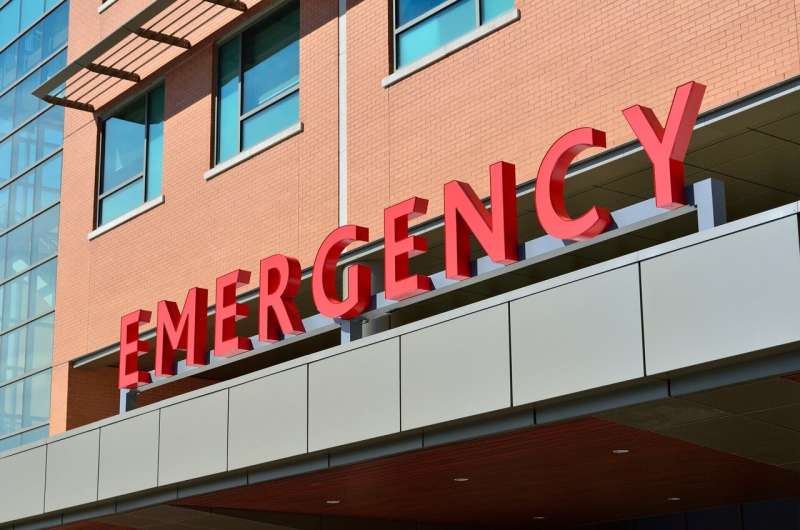Crowded emergency departments may affect patients throughout the hospital

Prior research has established that crowding in emergency departments can lead to worse outcomes for patients receiving emergency care. Patients in a crowded emergency department become sicker and are more likely to die than those treated in less crowded conditions, but the problems associated with emergency department crowding do not end at the unit's door. New research from Penn State showed that crowded emergency departments are associated with higher rates of death throughout the hospital.
In a new article published in the journal Health Services Research, a group of researchers from Penn State and University of California, San Francisco found that patients throughout a hospital are 5.4% more likely to die of any cause on days when that hospital's emergency department is crowded.
The researchers examined more than five million discharge records from hospitals across California between October 2015 and the end of 2017. Other than records from the smallest hospitals, records from patients younger than 20 and records from patients transferred between hospitals, all hospital discharges in the state were captured. The researchers found that people were more likely to die on days when the emergency department in their hospital was crowded.
In the study, the researchers measured crowding by counting the number of people in the emergency department. Conceptually, emergency department crowding is more complex than the number of people in the department; it also involves the level of staffing, the number of inpatient beds available, and the complexity of cases being treated. Still, prior research has shown that the count of people in the emergency department can serve as an effective proxy for all these factors.
"Though it is understood that a lack of available inpatient beds can lead to emergency department crowding, this is the first time that research has examined whether this crowding was associated with problems throughout the hospital," said Charleen Hsuan, assistant professor of health policy and administration and lead author of the article. "Since this association was just discovered, we do not know for sure what causes the increase in deaths, but increased workload for the inpatient nurses and doctors seems to be one likely factor."
An average of 2.6% of hospital patients died during inpatient stays throughout the study. As the emergency department in a hospital became more crowded, people throughout that hospital became more likely to die. When emergency department occupancy was above average, inpatients in the hospital were 3.1% more likely to die. Then, when emergency departments became more crowded, inpatients were 3.8% more likely to die than the average death rate for all patients. When emergency departments were the most crowded, patients were 5.4% more likely to die.
"We are not saying that people are dying because of emergency room crowding," Hsuan said. "The causes of death have not been explored. What these results show, however, is that hundreds more people died every year in these hospitals when emergency departments were crowded than when emergency departments were less full. Whatever the reason or reasons, that phenomenon is clearly important to understand."
The researchers said that the situation must be addressed, but they caution that it is too early to implement solutions. One factor is that the data were collected in California, one of the only states in the nation that legislates minimum staffing levels for nurses. It is possible—though this has not been evaluated—that the death rate is even higher when an emergency department is crowded in states where nurse staffing levels are lower. More research is needed to understand both the scope of the problem and the implications of these findings.
"One thing is clear: emergency department crowding is a whole-hospital problem," Hsuan said. "When policymakers and hospital administrators think about this problem, they need to consider the impacts on all patients and not just those in the emergency department. Policymakers may need to take a systems perspective on improving the quality of care in hospitals."
More information: Charleen Hsuan et al, Association of emergency department crowding with inpatient outcomes, Health Services Research (2022). DOI: 10.1111/1475-6773.14076





















